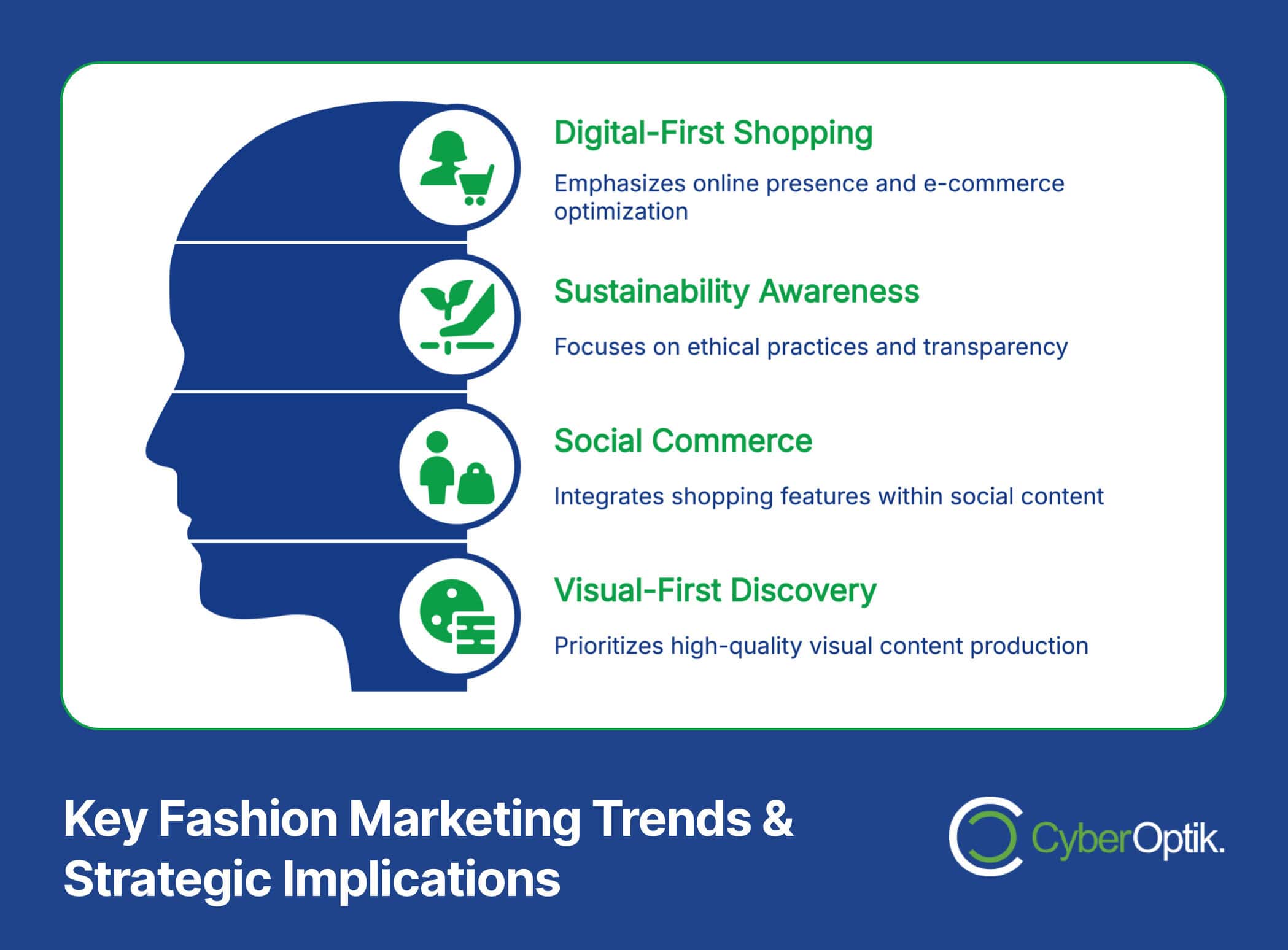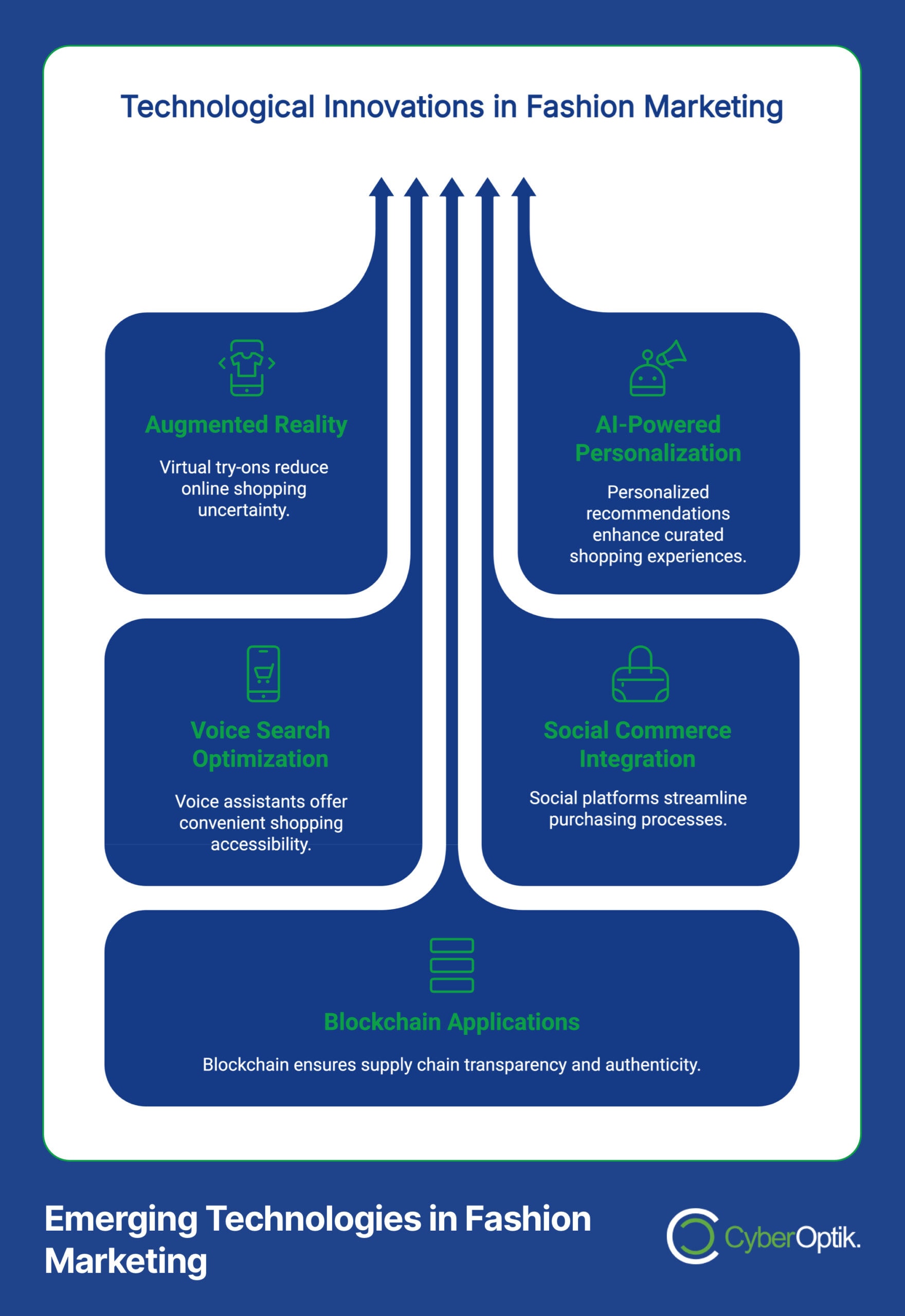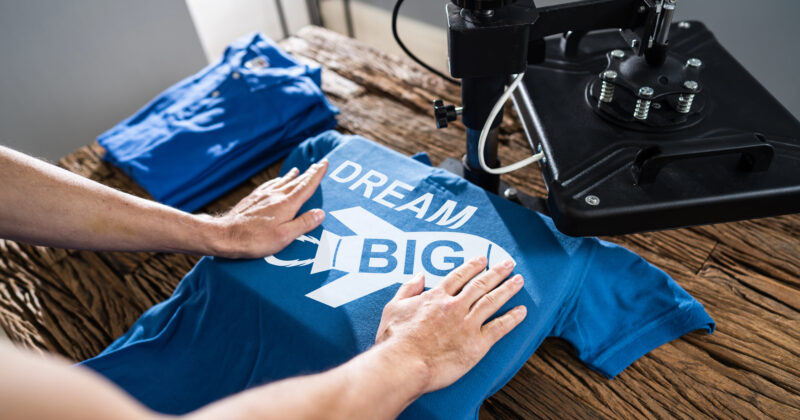The fashion industry continues to evolve at breakneck speed. Today’s clothing brands face unique challenges in capturing consumer attention and building lasting loyalty. With the global apparel market projected to reach $2 trillion by 2029, the opportunities are substantial—but so is the competition. (Source: Statista)
In this guide, we’ll explore the most effective marketing strategies for clothing brands looking to increase visibility, engage with their audience, and drive sustainable growth. From digital essentials to influencer partnerships, we’ll cover actionable approaches that combine creativity with data-driven decision-making.
As a full-service digital marketing agency working with fashion and retail clients, we’ve observed that brands need more than just beautiful products. They need strategic approaches to storytelling, platform selection, and customer engagement that align with today’s consumer expectations.
Understanding the Modern Fashion Marketing Industry
The fashion industry represents a significant economic force. The global fashion industry contributes approximately $2.4 trillion to the world economy, equivalent to the GDP of major nations. (Source: Big Frenchies)

Today’s clothing brands operate in a complex marketing environment. Digital channels have transformed how consumers discover, evaluate, and purchase fashion items. This shift requires brands to adapt their strategies accordingly.
Consumer behavior continues to evolve rapidly. The average American now purchases about 68 garments annually, compared to just 28 in the 1990s, demonstrating the acceleration of fashion consumption and the importance of continuous engagement. (Source: Big Frenchies)
Several key trends currently shape the fashion marketing landscape:
| Trend | Impact on Marketing | Strategic Implications |
|---|---|---|
| Digital-First Shopping | Increased importance of online presence and experience | Need for seamless e-commerce and mobile optimization |
| Sustainability Awareness | Growing consumer demand for ethical practices | Transparency and authentic sustainability messaging |
| Social Commerce | Blurring lines between content and purchasing | Integration of shopping features within social content |
| Visual-First Discovery | Emphasis on aesthetic appeal in marketing | Investment in high-quality visual content production |
This evolving landscape presents both challenges and opportunities. Brands that understand these shifts can position themselves for growth by adapting their marketing approaches to meet consumers where they are.
Building a Strong Brand Identity for Your Clothing Line
A distinctive brand identity forms the foundation of successful clothing marketing. It helps your brand stand out in a crowded marketplace and creates emotional connections with your target audience.
Creating a stellar brand identity requires careful consideration of several key elements. Each component should work together to tell a cohesive story about your clothing line’s values, aesthetic, and purpose.
Defining Your Unique Value Proposition
Your value proposition addresses a fundamental question: why should customers choose your clothing brand over competitors? This goes beyond product features to articulate the unique benefits and experiences you provide.
Start by identifying what makes your brand truly different. Consider your design philosophy, manufacturing approach, customer service standards, or commitment to specific values like sustainability or inclusivity.
Effective value propositions for clothing brands typically focus on one or more of these differentiators:
- Design distinctiveness – Unique aesthetic or innovative construction
- Quality commitment – Superior materials or craftsmanship
- Brand ethos – Values that resonate with target customers
- Customer experience – Exceptional service or community
- Price-to-value relationship – Accessible luxury or premium basics
Your value proposition should be clear, compelling, and consistently communicated across all marketing channels. It guides everything from product photography to social media messaging.
Creating a Cohesive Visual Brand Language
Visual identity carries particular weight in the fashion industry. Your brand’s visual language includes elements like logo design, color palette, typography, photography style, and overall aesthetic.
When developing your visual brand language, consider how these elements will translate across different touchpoints—from your website and social media to packaging and physical retail spaces if applicable.
A poorly designed logo can hurt your business by creating disconnects between your brand promise and visual presentation. Invest in professional design that accurately represents your clothing line’s positioning.
Visual consistency builds recognition and trust. Create style guides that document your brand standards and ensure they’re followed across all marketing materials and channels.
Storytelling in Fashion Marketing
Stories create emotional connections with consumers. Effective fashion marketing often centers around compelling narratives about the brand’s heritage, creative vision, manufacturing process, or the lifestyle it represents.
Your brand story should feel authentic rather than manufactured. It might include elements such as:
The founder’s journey and inspiration. The problem your clothing line solves for customers. The craftsmanship behind your products. The communities or causes your brand supports. The transformation customers experience when wearing your clothing.
Once developed, this narrative should inform your content marketing strategy, providing themes and angles for blog posts, social content, email campaigns, and other customer communications.
Digital Marketing Essentials for Clothing Brands
In today’s market, a robust digital presence is non-negotiable for clothing brands. Digital marketing encompasses various channels and tactics that work together to increase visibility, engage customers, and drive sales.
Creating a User-Friendly E-commerce Experience
Your website serves as both storefront and brand ambassador. The quality of your e-commerce experience directly impacts conversion rates and customer satisfaction.
Here are essential features that every fashion e-commerce site should include:
| Feature | Purpose | Implementation Considerations |
|---|---|---|
| High-quality product imagery | Showcases product details and styling | Multiple angles, zoom functionality, lifestyle context |
| Detailed sizing guides | Reduces return rates and increases purchase confidence | Measurements, fit descriptions, model information |
| Mobile optimization | Accommodates predominant shopping method | Responsive design, streamlined checkout, touch-friendly navigation |
| Simple checkout process | Minimizes cart abandonment | Few steps, guest checkout option, multiple payment methods |
Beyond these features, consider how your site’s overall design and functionality reflect your brand identity. The user experience should align with your clothing line’s positioning, whether that’s minimalist luxury or playful accessibility.
Content Marketing Strategies for Fashion Brands
What common content marketing mistakes should fashion brands avoid when building their online presence? Often, brands focus exclusively on product promotion rather than creating valuable content that engages their target audience.
Effective content marketing for clothing brands balances inspiration, education, and promotion. Consider these content types for your strategy:
- Style guides and lookbooks – Seasonal inspiration and styling tips
- Behind-the-scenes content – Design process and production insights
- Care and maintenance tutorials – Helping customers extend product life
- Trend analysis and forecasting – Positioning your brand as an industry authority
- Customer stories and testimonials – Authentic experiences with your products
Content should be created with both human readers and search engines in mind. Develop a content calendar that aligns with your business goals, seasonal offerings, and customer interests.
SEO Essentials for Clothing Brand Websites
Search engine optimization helps potential customers find your clothing brand when searching for products or information you provide. Fashion is a particularly competitive SEO landscape, requiring strategic approaches.
Key SEO considerations for clothing brands include:
Product page optimization with detailed descriptions, specifications, and high-quality images. Category page optimization that targets broader search terms while maintaining user-friendliness. Technical SEO elements like site speed, mobile friendliness, and structured data markup. Local SEO if you have physical retail locations.
Remember that modern SEO extends beyond keywords to include factors like user experience, content quality, and site authority. A holistic approach that prioritizes both searchers and search engines will yield the best results.
Social Media Marketing Strategies for Fashion Brands
Social media platforms serve as natural showcases for clothing brands. With visual content driving higher engagement, fashion marketing thrives in these visually-oriented environments.
Successful social media marketing requires strategic platform selection, content optimization, and community building approaches tailored to your brand’s target audience.
Platform Selection and Strategy
Not all social platforms deliver equal value for clothing brands. Each platform has distinct demographics, content formats, and engagement patterns that may align better with certain brand positionings.
Current data shows varying engagement rates across platforms for fashion content. Instagram sees an average engagement rate of 1.8% for retail and fashion brands, while TikTok achieves approximately 2.0%, making it the top-performing platform for beauty and fashion content. (Source: Hootsuite)
Here’s a comparative analysis of major platforms for fashion marketing:
| Platform | Key Strengths | Best For | Content Focus |
|---|---|---|---|
| Visual showcase, shopping features | Brand building, product discovery | Polished lifestyle imagery, Stories, Reels | |
| TikTok | Trend creation, authentic content | Youth markets, viral potential | Behind-the-scenes, styling videos, challenges |
| Inspiration seeking, planning | Driving considered purchases | Seasonal lookbooks, styling ideas, mood boards | |
| Community building, advertising options | Older demographics, customer service | Product announcements, company news, events |
Rather than spreading resources thinly across all platforms, focus on those most relevant to your target customers. Develop platform-specific strategies that play to each channel’s strengths while maintaining brand consistency.
Visual Content Optimization for Fashion
The quality of visual content directly impacts engagement rates. For fashion brands, this means investing in professional photography and videography while maintaining a consistent aesthetic.
Best practices for fashion visual content include:
Consistent lighting and color grading that reflects your brand identity. Diverse representation in models and contexts to reach broader audiences. A mix of product-focused and lifestyle imagery to show items in context. Video content demonstrating fit, movement, and styling options. User-generated content that shows real customers wearing your pieces.
Finding quality stock photos can supplement your custom content, but should never replace authentic imagery of your actual products and brand experience.
Building an Engaged Community
Social media success extends beyond posting content to building genuine community. Engagement rates vary significantly across brands, with top performers like Jacquemus achieving a 2.6% Instagram engagement rate compared to the 1.65% average for US fashion brands on organic influencer content. (Source: Business of Fashion)
Community building strategies include:
Responding promptly to comments and messages. Featuring customer content through reposts and stories. Creating interactive content like polls, questions, and challenges. Developing branded hashtags that encourage participation. Offering exclusive content or early access to followers.
Remember that avoiding common social media mistakes is just as important as implementing best practices. Consistency, authenticity, and genuine interaction typically yield better results than sporadic posting or overly promotional content.
Leveraging Influencer Marketing in the Fashion Industry
Influencer partnerships have become integral to fashion marketing strategies. These collaborations extend reach, build credibility, and showcase products in authentic contexts.
The effectiveness of influencer marketing hinges on finding the right partners, measuring results accurately, and maintaining ethical standards throughout campaigns.
Finding the Right Influencer Partners
Successful influencer marketing starts with selecting partners whose audience, aesthetic, and values align with your brand. This alignment creates more authentic content and higher engagement.
When evaluating potential influencer partners, consider these factors:
| Influencer Tier | Follower Range | Typical Engagement | Best Use Cases |
|---|---|---|---|
| Nano | 1,000-10,000 | Higher (3-8%) | Highly targeted communities, authentic content |
| Micro | 10,000-50,000 | Good (2-4%) | Niche markets, product seeding, content creation |
| Mid-tier | 50,000-500,000 | Moderate (1.5-3%) | Balanced reach and engagement, category authority |
| Macro | 500,000-1M+ | Lower (1-2%) | Brand awareness, major campaigns, prestige |
Look beyond follower counts to analyze content quality, audience demographics, and past brand partnerships. The most effective influencers create content that feels natural and valuable to their audience rather than overtly promotional.
Measuring Influencer Campaign Success
Clearly defined metrics help determine whether influencer partnerships deliver value. Different campaign objectives require different measurement approaches.
Key performance indicators for fashion influencer campaigns might include:
Engagement metrics like likes, comments, saves, and shares. Reach and impression data to gauge awareness impact. Tracking links or coupon codes to measure direct conversion. Brand sentiment analysis in comments and mentions. Content quality and reusability for your owned channels.
Establish baseline metrics before campaigns and set reasonable expectations based on influencer tier, platform, and campaign type. Remember that some benefits, like brand perception shifts, may take longer to measure than immediate engagement metrics.
Ethical Considerations in Influencer Partnerships
Transparency and authenticity are essential for effective influencer marketing. Both consumers and regulators expect clear disclosure of sponsored content.
Beyond disclosure requirements, consider how your influencer strategy aligns with broader brand values. If your brand emphasizes sustainability, for instance, partnering with influencers known for excessive consumption could create disconnects.
Other ethical considerations include fair compensation, reasonable content ownership terms, and appropriate representation across your influencer portfolio. Taking an ethical approach protects both your brand reputation and long-term influencer relationships.
Sustainability as a Marketing Advantage
Sustainability has evolved from a niche concern to a major factor in consumer purchasing decisions. For clothing brands, authentic sustainability initiatives can create meaningful differentiation and build customer loyalty.
Consumer awareness of fashion’s environmental impact continues to grow. Currently, 72% of Americans report awareness of sustainability issues in the fashion industry, indicating a significant shift in consumer consciousness. (Source: Big Frenchies)
Communicating Authentic Sustainability Initiatives
Effective sustainability communication requires transparency and specificity. Vague claims without substantiation can appear as “greenwashing” and damage brand credibility.
This framework can guide how you communicate sustainability efforts:
| Communication Element | Purpose | Implementation Approach |
|---|---|---|
| Specific claims | Builds credibility through precision | 75% recycled materials" vs. "eco-friendly" |
| Process transparency | Demonstrates commitment to accountability | Factory conditions, material sourcing, waste management |
| Third-party verification | Provides independent validation | Certifications, audits, industry partnerships |
| Improvement goals | Shows ongoing commitment | Specific targets with timelines and progress updates |
When highlighting sustainability, focus on genuine initiatives where you can demonstrate real impact rather than symbolic gestures. Consumers increasingly recognize the difference.
Meeting Consumer Expectations for Ethical Fashion
Consumer expectations around ethical fashion extend beyond environmental concerns to include labor practices. Currently, 55% of consumers expect brands to ensure worker health and safety, demonstrating the importance of holistic ethical considerations. (Source: Big Frenchies)
This contrasts sharply with industry realities where approximately 93% of brands don’t pay garment workers a living wage, highlighting a significant gap between consumer expectations and common practices. (Source: Good On You)
Brands making authentic progress on ethical labor practices can differentiate themselves by transparently communicating their approaches to:
Fair labor practices and living wages. Safe working conditions and worker rights. Community investments in manufacturing regions. Supply chain transparency and traceability. Worker voice and empowerment initiatives.
As with environmental claims, specific, verifiable information carries more weight than generalized statements about caring for workers.
Building Brand Loyalty Through Responsible Practices
Sustainability initiatives can drive long-term customer loyalty when integrated authentically into brand identity and operations. This requires consistency between marketing messages and actual business practices.
Consider these approaches to build loyalty through responsibility:
Educate customers about the impact of their purchasing decisions. Involve customers in sustainability initiatives through programs like recycling or upcycling. Demonstrate continuous improvement rather than claiming perfection. Share the challenges and complexities of sustainability honestly. Collaborate with other brands or organizations on industry-wide improvements.
When brands take substantive action on environmental and social issues that matter to their customers, they create emotional connections that transcend individual transactions.
Data-Driven Decision Making for Clothing Brands
Effective marketing strategies rely on data rather than assumptions. For clothing brands, this means systematically collecting, analyzing, and applying insights from various data sources.
The fashion industry generates abundant data across the customer journey. Leveraging this information helps brands allocate resources more effectively and improve campaign performance.
Essential Metrics to Track
Fashion brands should monitor metrics that provide insights into customer behavior, marketing performance, and business results. Different metrics matter at different stages of the customer journey.
Here are key metrics worth tracking:
| Metric Category | Example Metrics | Business Impact |
|---|---|---|
| Acquisition Metrics | Traffic sources, CAC by channel, CTR | Marketing channel effectiveness and efficiency |
| Engagement Metrics | Time on site, page views, social interactions | Content and experience quality indicators |
| Conversion Metrics | Conversion rate, AOV, checkout abandonment | Sales funnel performance and friction points |
| Retention Metrics | Repeat purchase rate, LTV, review scores | Customer relationship strength and longevity |
Establish baseline metrics for your brand and industry benchmarks where available. This context helps you determine whether performance indicates an opportunity or concern.
Using Analytics to Refine Marketing Strategies
Data collection provides value only when translated into strategic adjustments. Regular analysis helps identify both opportunities and underperforming areas that need attention.
The analytics process should follow this general approach:
Establish clear business questions that analytics should answer. Collect relevant data from appropriate sources. Analyze for patterns, correlations, and anomalies. Generate actionable insights based on findings. Implement strategic adjustments. Measure results and iterate.
For clothing brands, analytics might reveal insights like which product categories drive the most engagement, which marketing channels convert best for different customer segments, or which content themes resonate most strongly with your audience.
A/B Testing for Fashion Marketing Optimization
Systematic testing helps refine marketing elements from email subject lines to product page layouts. A/B testing compares two versions to determine which performs better against specific objectives.
Fashion brands can particularly benefit from testing:
Product photography styles and approaches. Email marketing content and frequency. Ad creative variations across platforms. Website navigation and filtering options. Pricing and promotion strategies.
Effective testing requires clear hypotheses, sufficient sample sizes, and proper measurement of results. Start with high-impact elements that directly influence conversion before moving to more subtle optimizations.
Implementing Integrated Marketing Campaigns
Successful clothing brands orchestrate marketing efforts across channels to create cohesive campaigns. This integrated approach ensures consistent messaging while leveraging the strengths of different platforms.
Integrated campaigns typically deliver stronger results than disconnected channel-specific efforts. The synergy between touchpoints creates multiple opportunities for customer engagement.
Coordinating Online and Offline Efforts
While digital dominates modern marketing, physical touchpoints remain valuable for clothing brands. Coordinating online and offline elements creates seamless customer experiences.
Consider these integration opportunities:
Promoting in-store events through digital channels. Using QR codes in physical locations to access digital content. Featuring user-generated content from social media in retail displays. Collecting email signups in-store for post-purchase nurturing. Extending the reach of physical lookbooks with digital versions.
Branded emails serve as particularly effective bridges between digital marketing and offline experiences, delivering personalized content that drives store visits or online purchases.
Seasonal Campaign Planning for Fashion
Fashion’s seasonal nature requires forward-looking campaign planning. Effective seasonal campaigns balance newness and continuity while building anticipation for upcoming collections.
A strategic seasonal campaign might follow these steps:
- Define specific goals for the upcoming season
- Develop creative concepts that align with collection themes
- Create content assets for various channels and touchpoints
- Schedule phased rollout across platforms
- Implement measurement framework to track results
Seasonal planning should account for industry events, shopping patterns, and competitive activity while maintaining flexibility to respond to emerging trends or opportunities.
Measuring Campaign ROI
Comprehensive ROI measurement helps justify marketing investments and optimize resource allocation. Fashion campaigns should establish clear metrics before launch.
ROI measurement encompasses:
Direct revenue attribution to campaign elements. Brand lift and awareness metrics. Engagement and community building outcomes. New customer acquisition vs. existing customer activation. Content performance and future reusability.
Attribution models should acknowledge the complexity of the customer journey, which often involves multiple touchpoints before purchase. Multi-touch attribution provides more nuanced understanding than simplistic last-click approaches.
Future-Proofing Your Clothing Brand’s Marketing
The fashion marketing landscape continues to evolve rapidly. Preparing for future developments helps brands maintain relevance and competitive advantage.
Building adaptability into your marketing approach ensures you can respond effectively to emerging technologies, changing consumer behaviors, and industry disruptions.
Emerging Technologies in Fashion Marketing
Several technologies are reshaping how clothing brands connect with customers. Understanding these developments helps brands prepare for integration when appropriate.

Key technologies to monitor include:
Augmented reality for virtual try-on experiences. AI-powered personalization for product recommendations. Voice search optimization for shopping experiences. Social commerce integration for frictionless purchasing. Blockchain for supply chain transparency and authentication.
Rather than adopting every new technology, evaluate each based on its potential to solve specific customer problems or enhance particular aspects of your brand experience.
Adapting to Changing Consumer Behaviors
Consumer preferences and behaviors continue to shift, influenced by broader social, economic, and technological trends. Staying attuned to these changes helps brands remain relevant.
Current behavioral shifts include:
Increased focus on value and longevity over fast fashion. Growing interest in secondhand and rental models. Demand for inclusive sizing and representation. Preference for brands that align with personal values. Expectations for seamless omnichannel experiences.
Regular customer research helps identify how these broader trends manifest within your specific audience. This understanding allows for timely strategy adjustments that maintain connection with evolving preferences.
Building Flexibility into Your Marketing Strategy
Rigid marketing plans rarely survive contact with rapidly changing market conditions. Building strategic flexibility allows brands to respond to unexpected developments while maintaining core brand identity.
Approaches to increase marketing flexibility include:
Creating modular content that can be reconfigured for different contexts. Developing rapid response capabilities for trend participation. Maintaining testing budgets for emerging platforms and approaches. Building diverse skill sets within marketing teams. Establishing clear guidelines for brand voice while allowing contextual adaptation.
The most successful clothing brands maintain consistent brand identity while demonstrating agility in how they express that identity across evolving channels and contexts.
Effective marketing for clothing brands requires a strategic blend of creativity and analytics. By building strong brand foundations, leveraging appropriate digital channels, embracing sustainability, and maintaining data-driven approaches, fashion brands can create meaningful connections with their target audiences.
The strategies outlined in this guide provide a framework for developing marketing approaches tailored to your specific brand positioning, audience, and business goals. While tactics will evolve with changing technologies and consumer preferences, the fundamental principles of authentic storytelling, customer-centricity, and consistent brand experience remain constant.
As you implement these strategies, remember that consistency across touchpoints builds recognition while strategic experimentation drives innovation. This balance helps established brands maintain relevance and gives emerging brands room to find their distinctive voice in a competitive marketplace.
Ready to elevate your clothing brand’s digital marketing strategy? Our team specializes in creating cohesive online experiences that build brand equity and drive business results. Contact us to discuss how we can help your fashion brand thrive in today’s digital landscape.




